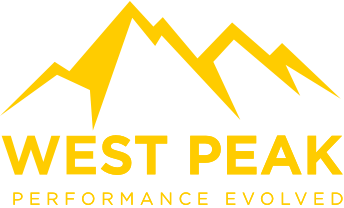Leadership Blind Spots: How to Identify and Address Them
In the world of leadership, few things are as dangerous as what you don’t see coming. Blind spots—those unseen or unacknowledged behaviours, habits, or perspectives—can silently undermine your effectiveness, relationships, and team performance. While leadership is often about vision, blind spots can blur that vision in ways even the best leaders don’t anticipate.
This blog delves into the most common blind spots leaders face, why they’re so pervasive, and how to tackle them head-on. Because great leadership isn’t just about leading others—it’s about continually leading yourself to be better.
What Are Leadership Blind Spots, and Why Do They Matter?
Blind spots are areas of ignorance or unconscious incompetence—things you don’t know you’re doing or failing to do. In leadership, these often manifest in behaviours or assumptions that hinder growth, damage relationships, or erode trust.
For instance, a leader might think their open-door policy makes them approachable, yet their team may feel hesitant to share honest feedback due to fear of repercussions. These disconnects matter because they create gaps in communication, morale, and performance.
Blind spots, left unchecked, can derail even the most competent leaders. Awareness, humility, and action are the antidotes.

What Are the Most Common Blind Spots in Leadership?
- Overestimating Self-Awareness
Many leaders believe they have a high degree of self-awareness, but research suggests otherwise. According to a study published in Harvard Business Review, only 10-15% of people are truly self-aware, despite 95% thinking they are.
How to address it:
- Seek 360-degree feedback. Honest input from peers, direct reports, and even clients can reveal how others perceive your actions.
- Reflect regularly. Set aside time to evaluate your decisions and behaviours. Journaling or mindfulness practices can deepen self-awareness.
- Confusing Busyness with Productivity
Leaders often equate long hours and packed schedules with effectiveness. Yet, being “busy” doesn’t always mean being impactful.
How to address it:
- Prioritise ruthlessly. Use frameworks like the Eisenhower Matrix to focus on what’s urgent and important.
- Delegate effectively. Trust your team to handle tasks that don’t require your direct involvement.
- Avoiding Conflict
It’s easy to fall into the trap of avoiding difficult conversations to keep the peace. However, unresolved conflicts often fester, leading to bigger issues down the line.
How to address it:
- Reframe conflict as growth. See disagreements as opportunities to understand others and strengthen relationships.
- Equip yourself with tools. Training in conflict resolution techniques, such as active listening or collaborative problem-solving, can be game-changers.
- Blind Loyalty to Underperformers
While loyalty is a commendable trait, sticking with an underperforming team member for too long can demoralise others and stall progress.
How to address it:
- Set clear expectations. Be upfront about performance standards and timelines for improvement.
- Know when to let go. Sometimes, the kindest thing you can do is help someone transition to a role that better suits their skills.
- Focusing on Results, Not People
Leaders who are too results-driven risk neglecting the human side of leadership. This can lead to burnout, disengagement, and high turnover within their teams.
How to address it:
- Celebrate wins—big and small. Acknowledge the effort behind the results, not just the outcomes.
- Invest in relationships. Build trust and camaraderie through genuine connection.
How Can Leaders Uncover Blind Spots?
Ask for Feedback—and Really Listen
The most effective leaders actively seek feedback. This could be through anonymous surveys, one-on-one conversations, or formal performance reviews. Importantly, when feedback is received, it must be taken seriously and acted upon.
Conduct Regular Self-Assessments
Use tools like the Johari Window or self-assessment frameworks to uncover areas where you might be falling short. Self-awareness is a muscle that needs constant strengthening.
Engage a Mentor or Coach
A mentor or leadership coach can provide an external perspective, helping you identify and address blind spots you might otherwise overlook.
Why Is Addressing Blind Spots Crucial for Business Growth?
Blind spots don’t just affect leaders—they ripple through teams and organisations. Addressing them can:
- Improve team dynamics. Teams thrive when leaders are in tune with their strengths and weaknesses.
- Enhance decision-making. A clear view of reality leads to better strategic choices.
- Boost morale. Employees value leaders who are self-aware and adaptable.
By shining a light on your blind spots, you pave the way for greater trust, collaboration, and long-term success.
How Can You Start Today?
The journey to uncovering and addressing blind spots begins with a simple step: intentionality. Make a commitment to seek feedback, challenge your assumptions, and invest in your growth. Because the most powerful leaders aren’t the ones who pretend to have all the answers—they’re the ones willing to learn and evolve every day.
Subscribe to our Podcast
Hosted by our very own Ben Stocken and Benjamin Wade our ‘How They Lead’ podcast aims to evolve the way people perform in leadership roles by showcasing a variety of high performance interviews with people from Patrick Kershaw from The RAF Red Arrows to CEO’s like Steve Phillips who help large brands like Pepsi, Mars and Unilever.
Get one step ahead – Click below to subscribe.










